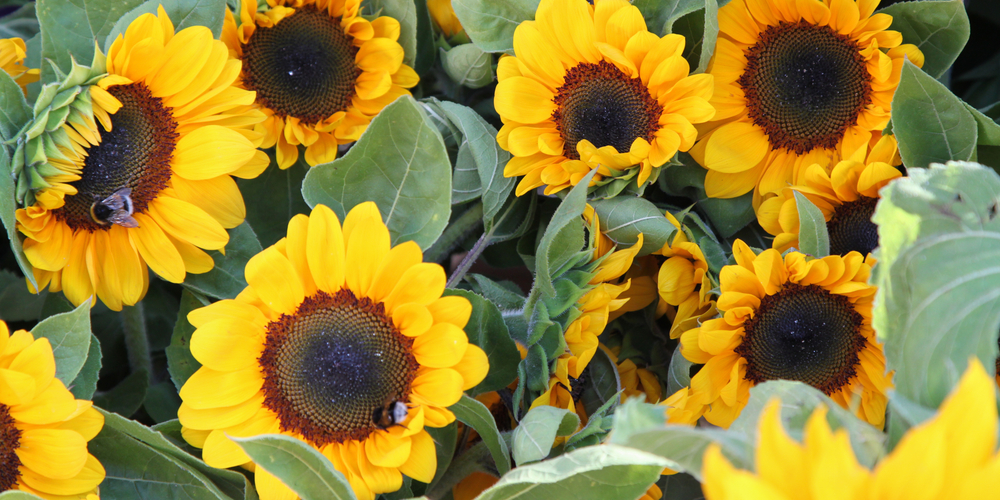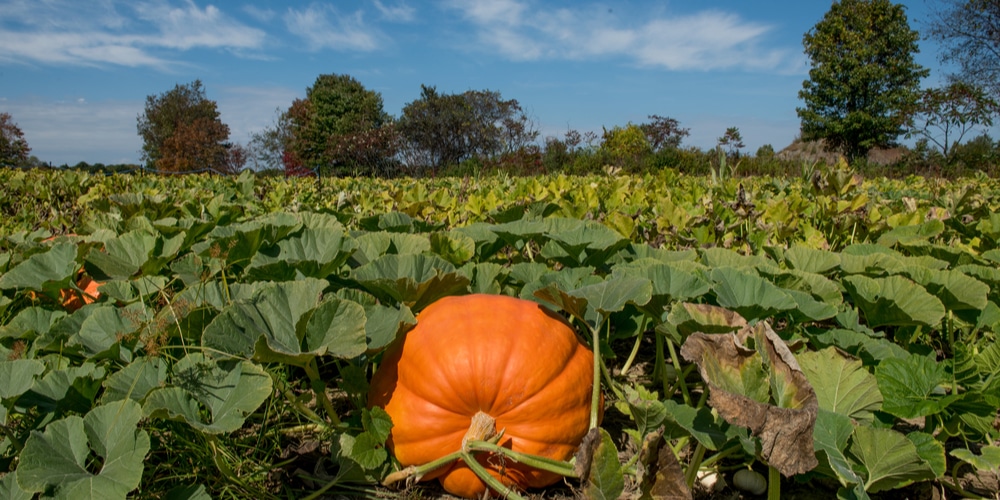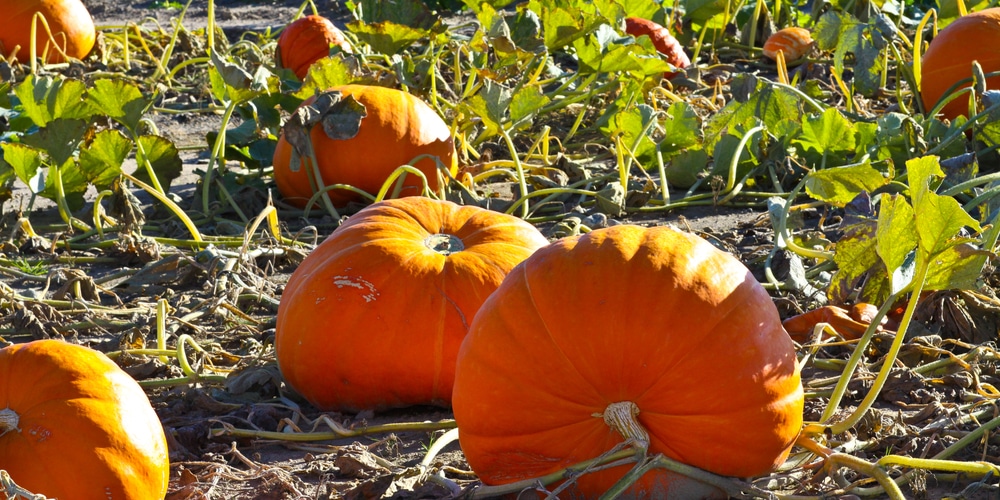Pumpkins and sunflowers are more than a beautiful autumn spectrum of colors. They can flourish in the same garden, and the sunflowers help protect the pumpkins from pests and improve the crop yield through increased pollination. Experienced gardeners often use the companion planting technique to improve crop output.
Companion planting is when two or more plants grow together to benefit one or both plants – whether as pest deterrence, providing shade, or improving the soil. Native Americans often used the Three Sisters trio – maize, climbing beans, and winter squash. The tall-growing corn is a climbing post for the beans, the low-growing squash provides shade and keeps the ground moist, and the quickly-growing beans improve the soil.
Other variations of companion planting include growing two vegetables together to deter and confuse pests or planting a nectar-rich flower – like sunflowers – next to a crop to attract pollinators like bees.
Sunflower Basics

The sunflower is an annual flower native to North America. Since 1000 BCE we have used them as a food source and for dyes. Sunflowers have a large, bright yellow, vivid bloom. They are popular for their beautiful appearance – usually during autumn – their edible seeds, and valuable oil.
Sunflowers are also natural pollinators and an effective companion plant. They attract honey bees that pollinate neighboring plants and crops as they forage on the flowers. Sunflowers’ large size, vibrant colors, and abundant pollen make them a popular choice to plant next to pumpkins.
Pumpkin Basics
Pumpkins, native to Central America and Mexico, are a member of the gourd family, along with cucumbers, cantaloupe, honeydew melons, zucchini, and watermelon. Pumpkins have existed in North America for hundreds of years. They can range in size from one pound to a thousand pounds.
Pumpkins can be grown in the summer and are a classic autumn harvest. But long before we carve them up as Jack O’Lanterns on Halloween, they first need to grow inside the female flower through the pollination process. Wind and honey bees are the two most effective pollinators. While we cannot control the wind, we can plant flowers that attract bees to pollinate the pumpkins. That is where sunflowers come into play.
Growing Pumpkins and Sunflowers Together
Sunflowers are an effective companion plant for pumpkins for three reasons: increased pollination, vine stability, and pest deterrence.
- Pollination: when you plant sunflowers next to pumpkins, honey bees and various species of wild bees are attracted to the flowers. As bees land on the flowers, the hair on their body attracts and captures the pollen. As they fly from flower to flower and throughout the pumpkin patch, they increase pollination and help improve the pumpkin crop yield.
- Vine stability: Some sunflowers produce a large branch network as they grow. The pumpkin vines cling onto these branch networks and climb as they grow. The sunflower can also act as a climbing post for companion crops.
- Pest deterrence: Additionally, when sunflowers bloom in the fall, they attract birds. Birds visit the sunflowers to eat the seeds, and their presence near the pumpkin crop is a pest deterrence. Birds eat bugs that feast on the pumpkins, like ants, beetles, and slugs.
Conclusion
Companion planting can be an effective technique to improve your garden and increase crop yield without having to use harmful chemicals and pesticides. It is nature’s way of protecting crops as they grow. Sunflowers can be a good choice to plant as companions next to pumpkins because they attract birds and bees, improve pollination, deter pests, and give the pumpkin vines stability.

